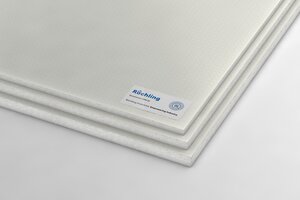
+
Combination of Polystone® M nuclear (Polyethylene) with lead for neutron radiation shielding

+
Ready-to-install component made of Polystone® D nuclear black (Polyethylene) for neutron shielding

+
Machined component made of Lignostone® H II/2/30-HB

+
Component for neutron shielding made of Lignostone® H II/2/30-HB

















